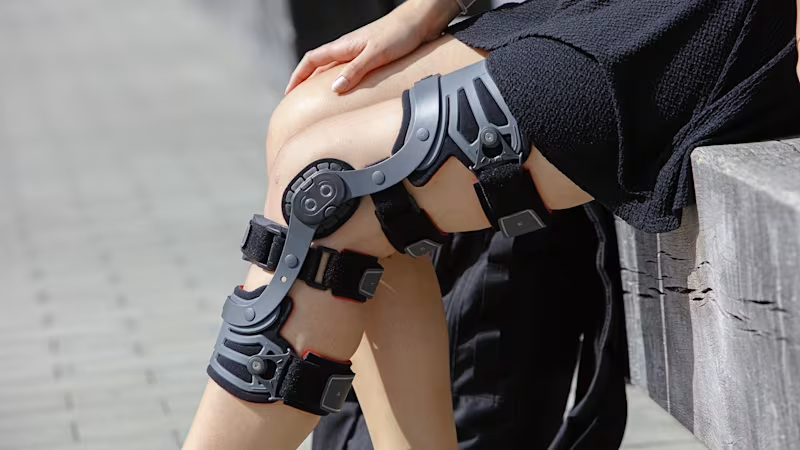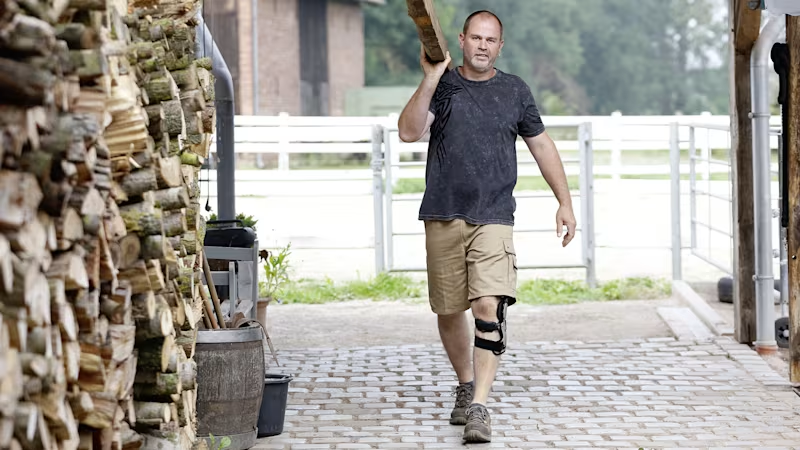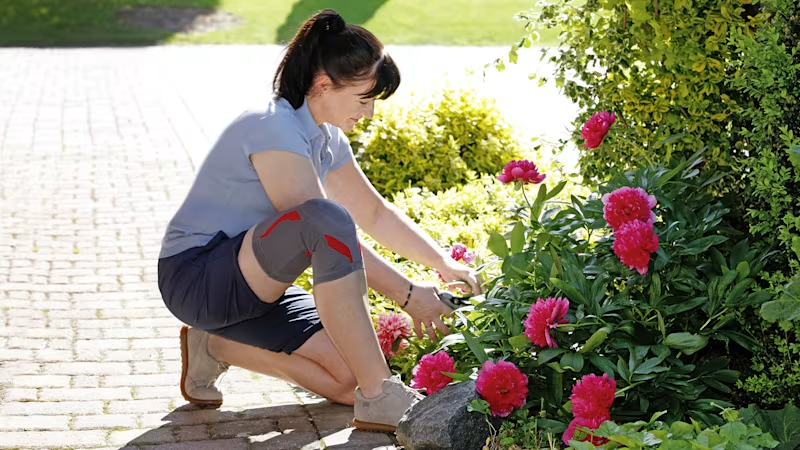


Órtesis de pierna y rodilla
Las órtesis de pierna y de rodilla de Ottobock ayudan a estabilizar las extremidades y las articulaciones en caso de limitaciones y a aliviar el dolor.
Las órtesis de pierna y de rodilla de Ottobock ayudan a estabilizar las extremidades y las articulaciones en caso de limitaciones y a aliviar el dolor.
Recuperar la movilidad con órtesis de rodilla y de pierna
Las piernas y las rodillas realizan cada día un trabajo de alto rendimiento. Nos llevan de un lado a otro y aseguran que podamos subir escaleras sin medio auxiliar. A menudo no somos conscientes de la importancia que tienen las extremidades inferiores para la movilidad hasta que dejan de funcionar como deberían. Las dolencias articulares, como la gonartrosis, o lesiones, como roturas de los ligamentos cruzados, no solo son dolorosas, sino que también pueden limitar enormemente la movilidad de las personas afectadas. No importa si es algo pasajero o permanente: si sufre dolores o limitaciones del aparato locomotor, los medios auxiliares ortopédicos como las órtesis de rodilla y los correajes de Ottobock pueden contribuir a la descarga, la estabilización y la movilización.
¿Qué son las órtesis y correajes de rodilla?
Las órtesis de rodilla y los correajes son medios auxiliares ortopédicos que protegen y asisten en caso de trastornos del aparato locomotor y que alivian el dolor. Se encargan de que las piernas y las rodillas reciban el apoyo óptimo, las estabilizan, descargan y movilizan. Además, algunas órtesis especiales pueden inmovilizar toda la pierna. Las órtesis de rodilla están dotadas de elementos funcionales estables, como barras, articulaciones o varillas de plástico o metal, aunque también pueden presentar elementos elásticos. Para los correajes para la rodilla se emplean materiales flexibles. Los correajes de rodilla para el uso diario se componen de tejidos elásticos e incorporan a menudo almohadillas, unos insertos elásticos. Apoyan la articulación afectada y pueden reducir irritaciones, la hinchazón y edemas mediante compresión.

Ámbito de uso de las órtesis y los correajes de rodilla
El uso de órtesis de rodilla puede merecer la pena en diversos cuadros clínicos. Las órtesis de pierna se emplean, entre otras, en caso de lesiones funcionales y dolencias como gonartrosis o roturas de ligamentos. Contribuyen, por ejemplo, a proteger las articulaciones y, al mismo tiempo, pueden movilizar parcial o totalmente la parte del cuerpo afectada. Las órtesis de rodilla, como la Agilium Freestep 2.0 o la Agilium Reactive de Ottobock, han demostrado su eficacia además en casos de gonartrosis. Por el contrario, los correajes de rodilla se utilizan a menudo al practicar deporte. Los correajes, como la Genu Sensa, ofrecen libertad de movimiento y, al mismo tiempo, apoyan la articulación en caso de dolor de rodilla e inestabilidad. Además, los correajes elásticos contribuyen a reducir la hinchazón, derrames e inflamaciones. Para procurar estabilidad una vez curada una lesión, las órtesis de rodilla también pueden ser un medio auxiliar de protección al practicar deporte.

¿Cómo se usan las órtesis de rodilla?
Los correajes para la rodilla y las órtesis de rodilla son medios auxiliares ortopédicos que se colocan y fijan de forma externa en las partes del cuerpo afectadas, tanto por encima de la ropa como también directamente sobre la piel. Para ello se sitúan en la zona correspondiente del cuerpo y se fijan mediante cierres de velcro, correas o enganches de plástico. Las órtesis deben tener un ajuste y un tamaño óptimos, esto es, no estar demasiado flojas y demasiado ceñidas. Si el medio auxiliar no está colocado correctamente, la órtesis de rodilla no cumplirá su finalidad y, en el peor de los casos, puede dificultar la circulación sanguínea y provocar hinchazón y dolor. Un ajuste correcto con una comodidad de uso máxima es el abecé de todo medio. Por este motivo, al elegir un producto ortopédico debe dejarse asesorar siempre por un médico o un técnico ortopédico.
¿Durante cuánto tiempo deben utilizarse las órtesis de rodilla?
Generalmente, los productos ortopédicos pueden utilizarse el tiempo que usted y su médico consideren necesario. Al principio, durante la fase de tratamiento posterior a una lesión, debería atenerse estrictamente a las indicaciones de uso de su médico. Normalmente, las órtesis solo se utilizan por la noche en casos excepcionales, pero esto también es algo que su médico le indicará expresamente. Si tiene molestias, acuda a un médico y aclare las causas. Una vez curada la lesión en la articulación de la rodilla, es posible continuar utilizando correajes y órtesis de rodilla. Pueden proteger contra cargas incorrectas y sobreesfuerzos. También es aconsejable realizar un control médico regular según el grado de gravedad de la lesión.

Volver a la vida cotidiana: en 3 pasos hasta la órtesis de Ottobock
- Aquí encontrará un resumen de las órtesis y correajes que pueden ser adecuados para usted. Lleve consigo esta lista la próxima vez que acuda al médico.
- Consulte a su médico cuál de las órtesis es la más adecuada para su cuadro clínico. Seguidamente, su médico le extenderá una receta para la órtesis correspondiente.
- Acuda con la receta a una ortopedia. Allí recibirá su nueva órtesis después de haberse adaptado con precisión a sus medidas corporales.